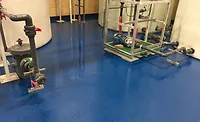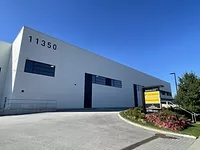British Columbia City Winning Battle Against Graffiti

Any town or city around the globe can count on two things – taxes and graffiti. The city of Nanaimo, British Columbia, Canada, is making progress in its fight against graffiti. And now, city officials have come up with a series of graffiti-prevention secrets that they want to share with the world, along with a caveat to taggers (those who apply graffiti).
Now, local taxpayers are getting a break as taggers have, for the most part, given up tagging areas where a new Seicoat anti-graffiti coating has been applied. The first firm to apply these coatings in British Columbia purchased the Master Franchise rights for British Columbia.
What can other municipalities learn from this? While Nanaimo might not be immediately recognized by folks outside of British Columbia, the city’s (pop. 80,000) challenges are enormous, trying to keep more than 200 city parks encompassing 1452 acres, 60 miles of trails and thousands of signs, walls and buildings, public and private, graffiti free. Geographically, Nanaimo (pronounced na-neye’-mo) is located 65 miles north of Victoria on Vancouver Island.
“It all began with the completion of a gleaming new Port of Nanaimo Convention Centre,” recalls Victor Cooper, the Parks, Trades Supervisor, Nanaimo. Knowing the structure would soon fall victim to graffiti, Victor and his supervisor, Ian Blackwood, Manager of Parks, Maintenance and Construction, opted to have an open bid encompassing testing and a demonstration of anti-graffiti coatings between well-known paint companies and graffiti removal and prevention firms.
Included as a contender was newly named Seicoat British Columbia, a leading anti-graffiti coating and removal firm that also offers periphery coatings and cleaning services. What sets this firm apart is that it has exclusive access to Los Angeles, CA-based Seicoat, a chemical formulator, manufacturer and franchisor. Seicoat is a privately held firm that is actively opening franchises. The Province of BC is one of its most successful and fastest growing. Graffiti Proofer® is a registered trademark owned by the company.
“Four area firms were brought in and asked to apply one or more protective anti-graffiti coatings to building surfaces comprised of brick, stone and concrete,” notes Cooper. “Then, after the coatings were applied, we attempted to remove the graffiti we applied to the treated surfaces.” Mr. Cooper adds that only one anti-graffiti coating prevailed.
“To our surprise,” adds Ian Blackwood, “the Seicoat application remained clear, whereas competitor coatings all had serious shortfalls or drawbacks. For example, one coating was milky in appearance while another comprised a thick, epoxy-like paste that radically changed the look of the conference centre wall surfaces. These initial surface appearances not withstanding,” continues Blackwood, “we then tried several ways and means to remove the tagged areas.”
Shocking Removal Results
Removal attempts resulted in poor results, except for one. The first coating was ‘sacrificial,’ meaning the coating was also removed when attempts were made to eradicate the graffiti; one of the firms applied a coating that was extremely glossy and altered the natural look of the surface, and the graffiti couldn’t be completely removed. Another firm’s coating, an epoxy formulation, allowed the paint and markers to penetrate the coating, making removal of the graffiti difficult and costly (ultimately solvents had to be used). This, combined with the strange appearance of the coating, eliminated this competitor.That left the last contender, Seicoat British Columbia of Ladysmith, British Columbia. “We challenged the town officials before they were able to get to the section of the Conference Centre we coated. They had tried soap, low- and high-pressure water, special removers and even hazardous solvents on competitive coatings,” recalls Darren Stackhouse, President of Seicoat British Columbia. “We suggested that they first try to remove the graffiti from our coating with a dry rag, but said if that failed to do the job, we’d then suggest trying plain low-pressure water.”
Either way, the town officials came to discover – with either a dry rag or with plain water – the graffiti came off completely and easily. Seicoat was chosen as the graffiti-prevention firm of choice and was contracted to apply the Graffiti Proofer coating to the Conference Centre.
City Saves Money/Rids Graffiti Problems
Not only did Nanaimo Parks substantially reduce graffiti-removal costs (they budget $80,000 CD per year for vandalism), but their policy to attempt to remove graffiti within 48 hours has also deterred taggers to the point where the conference centre tagging rarely happens after the coatings were applied.“We speculate that taggers want to proudly display their talents,” says Nanaimo’s Blackwood, “but if the paint, markers and other materials don’t stick, or are removed quickly, they give up. This has been the case with the conference centre plus another application at the nearby Maffeo Sutton Park retaining wall and stone flowerbed. The Seicoat coatings last for a minimum of 10 years, so our savings and payback have been considerable from the very start.”
The Nanaimo officials are also quick to point out that there are other factors that contribute to the program’s success. Actually, they cite three elements that play key roles in achieving favorable results that minimize tagging in Nanaimo.
- City policies that strive to remove any new graffiti within 48 hours.
- Hiring selected artists to paint murals or other approved artwork on specific buildings, walls and other surfaces. Once a surface is decorated, note the city spokesmen, taggers either go elsewhere, try to get into the program to paint murals and after murals are painted, respect the work and leave it alone.
- City officials reaching out to and working with the business community and local utilities to a) encourage them to have potential tagging areas coated with Graffiti Proofer; b) report tags and taggers; c) remove the graffiti themselves; and d) participate in the mural application program.
Graffiti-Deterring Options Not Viable
Nanaimo, like other cities and towns, has several options to keep structures like its convention centre and other buildings graffiti-free. These include special permanent coatings as discussed here; hiring an outside firm to remove work by taggers (as does Nanaimo for surfaces not coated by Seicoat); buying graffiti removing materials and doing it themselves; and contracting painters or having city employees cover over the graffiti.“Lack of graffiti or even minimal graffiti and its quick removal has become the pride of our community,” notes Victor Cooper, when speaking about the Port of Nanaimo Conference Centre and several other applications throughout the city. He tells of seeing security personnel who work at the convention center, removing graffiti with a dry rag or water only, although they are not asked or required to do so, “in proud moves to keep our facility clean and graffiti-free.”
The coating applied (optionally applied by brush, roller or sprayed) by Seicoat is guaranteed to last at least 10 years, but in many cases lasts longer as demonstrated in major projects that were coated in the late 1990s. The Seicoat British Columbia President Darren Stackhouse is quick to point out the additional savings realized with the coatings. He says, “Had the building not been coated, every time a tagger struck would have cost the City of Nanaimo at least $200 to $500 or more for us to come in to remove the graffiti. This situation could occur as many as a dozen or more times a year. Now city personnel do it themselves easily and safely.”
For more information on becoming a franchisee anywhere in North America, or information on products and services from Seicoat, contact the Marketing Department at 323/263.4575 e-mail info@seicoat.com or visit www.seicoat.com.
Looking for a reprint of this article?
From high-res PDFs to custom plaques, order your copy today!








